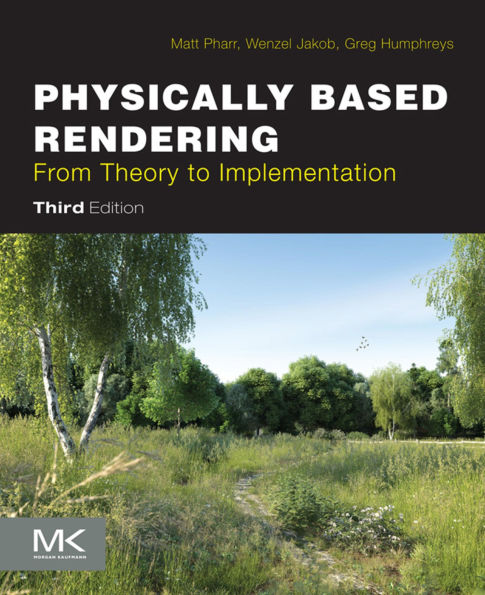Physically Based Rendering: From Theory to Implementation
Physically Based Rendering: From Theory to Implementation, Third Edition, describes both the mathematical theory behind a modern photorealistic rendering system and its practical implementation. Through a method known as 'literate programming', the authors combine human-readable documentation and source code into a single reference that is specifically designed to aid comprehension. The result is a stunning achievement in graphics education. Through the ideas and software in this book, users will learn to design and employ a fully-featured rendering system for creating stunning imagery. This completely updated and revised edition includes new coverage on ray-tracing hair and curves primitives, numerical precision issues with ray tracing, LBVHs, realistic camera models, the measurement equation, and much more. It is a must-have, full color resource on physically-based rendering. - Presents up-to-date revisions of the seminal reference on rendering, including new sections on bidirectional path tracing, numerical robustness issues in ray tracing, realistic camera models, and subsurface scattering - Provides the source code for a complete rendering system allowing readers to get up and running fast - Includes a unique indexing feature, literate programming, that lists the locations of each function, variable, and method on the page where they are first described - Serves as an essential resource on physically-based rendering
1126352029
Physically Based Rendering: From Theory to Implementation
Physically Based Rendering: From Theory to Implementation, Third Edition, describes both the mathematical theory behind a modern photorealistic rendering system and its practical implementation. Through a method known as 'literate programming', the authors combine human-readable documentation and source code into a single reference that is specifically designed to aid comprehension. The result is a stunning achievement in graphics education. Through the ideas and software in this book, users will learn to design and employ a fully-featured rendering system for creating stunning imagery. This completely updated and revised edition includes new coverage on ray-tracing hair and curves primitives, numerical precision issues with ray tracing, LBVHs, realistic camera models, the measurement equation, and much more. It is a must-have, full color resource on physically-based rendering. - Presents up-to-date revisions of the seminal reference on rendering, including new sections on bidirectional path tracing, numerical robustness issues in ray tracing, realistic camera models, and subsurface scattering - Provides the source code for a complete rendering system allowing readers to get up and running fast - Includes a unique indexing feature, literate programming, that lists the locations of each function, variable, and method on the page where they are first described - Serves as an essential resource on physically-based rendering
109.95
In Stock
5
1

Physically Based Rendering: From Theory to Implementation
1266
Physically Based Rendering: From Theory to Implementation
1266
109.95
In Stock

Product Details
| ISBN-13: | 9780128007099 |
|---|---|
| Publisher: | Morgan Kaufmann Publishers |
| Publication date: | 09/30/2016 |
| Sold by: | Barnes & Noble |
| Format: | eBook |
| Pages: | 1266 |
| File size: | 47 MB |
| Note: | This product may take a few minutes to download. |
About the Author
What People are Saying About This
From the B&N Reads Blog
